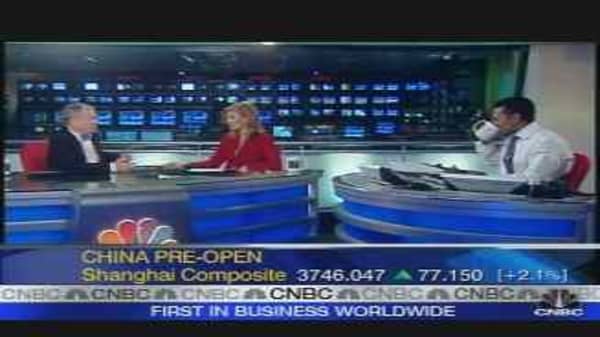Even the most seasoned commodity traders are looking back on this month's market action as nothing short of dramatic. Continued turmoil in the equity markets and falling confidence in the U.S. dollar sent investors scurrying into the relative safe haven of the commodities markets like droves of mad March hares.
The exodus sent commodity prices surging to consecutive records. Financial journalists watching the spectacle unfold, ripped up scripts on a daily basis as new highs kept being taken out from everything from oil to gold to grains.
The bullish momentum appeared irrepressible. The trend was your friend until the invariable correction came. It was a rebound in the dollar, triggered by a less aggressive 75 basis point rate cut by the Fed, that finally broke the back of the rally. That was the signal for the funds who had been instrumental in gunning this market to record highs to make for the exits.
The reversal was no less jaw-dropping than the rise. Oil dropped briefly below $100 a barrel while gold lost a bit of its allure as the dollar came back, falling below $1,000 an ounce. This sharp leg down begged the question: has the commodities bubble burst?
The consensus view is no.
Coming to the end of the quarter, it's only logical that fund managers will liquidate their investments and report back those earnings to their funds who no doubt should be impressed by the size of the returns made during such times of financial turbulence in the stock markets. Hard assets like commodities have never had it so good.
An unwinding of the sort dollar/long commodity trade is no bad thing. It's the market's 'pressure valve' allowing some of the steam to be vented out of rally. And, as Helmut Kaiser, Chief Investment Strategist at Deutsche Bank, told us, the pullback in commodities opens up buying opportunities. Yes, the magnitude and the overall whiplash of the correction took many by surprise but this is due to the fact that so much hot money had been chasing and found a home in commodities as the proverbial safe haven port during these tempestuous times.
So short to medium term, you're likely to see more liquidation. But it's worth stressing that agricultural commodities -- particularly wheat, corn and soybeans -- have compelling fundamentals supporting higher prices in the longer run.
Put simply, as long as emerging market economies like China and India continue to grow and the standard of living improves, people will eat more and eat better. Plus, as Dennis Gartman, commodities trader and author of The Gartman Letter, so consistently points out, as long as the U.S. is using ethanol as a fuel source, there will likely be a supply issue with corn. The big agribusiness firms such as Monsanto , are a good way in, Gartman says. The ever-outspoken Jim Rogers is on the same page: he's buying agricultural commodities such as cotton, wheat, coffee and sugar. "Buy agriculture. Agriculture is one of the few places where you're going to make a fortune in the next years," he said.
Remember 'agflation' -- agricultural price inflation -- we discussed in the last column?
Jim and others believe the Fed is ignoring this trend at its peril. Never one to mince his words, Jim has been giving the Fed a lashing for underestimating what he feels are the inflation risks caused by spiraling food and energy prices. Federal Reserve Chairman Ben Bernanke should resign and the Fed should be abolished as a way to boost the falling dollar and speed up the recovery of the U.S. economy, he told CNBC recently. Harsh medicine indeed, but if this happened, "we don't have anybody printing money, we don't have inflation in the land, we don't have a collapsing U.S. dollar."
Before I forget, a word about the black stuff ... oil has been a major beneficiary of the speculative feeding frenzy in commodities that sent prices above $111 a barrel. What has been staggering about the bull-run, is how the crude market has studiously ignored the bearish macro-economic fundamentals and instead pushed higher and further into record territory fuelled by the speculators.
Bad economic data has hammered the dollar and equity markets triggering more flight-to-safety buys in oil and commodities. It seems counter-intuitive that oil defied conventional wisdom and broke records while all data seemed to be pointing to weaker demand for resources. On top of that, U.S. inventory data told us unequivocally that demand was tapering off -- gasoline stocks were at multi-year highs and refiners were cutting back because of planned maintenance and thin margins.
Many, including OPEC, regard oil prices are being out of sync with the fundamentals. Around $80 a barrel is reasonable 'fair value' for oil. OPEC President Chakib Khelil has said petroleum prices will range between $80 and $110 per barrel for the rest of 2008, suggesting OPEC will defend this range.
Oil markets ignored the very stark supply and demand picture underlining just how powerful a force the speculators have been in driving this market higher in defiance of the fundamentals. But with the correction has come a change in market mentality: the 'demand destruction' penny appears to have dropped and markets are waking up to macro-economic view.
Still, markets are fickle beasts and if the dollar reverts back to its bear trend, then that may be what it takes to get the specs rolling back into commodities. Oil's action in the second quarter will be crucial in determining who's going to win out in this tug-of-war between the speculative money driving oil higher and the bearish macro-economic pressures pushing it lower.
Send Sri your questions and comments at commoditystore@cnbc.com.




.530x298.JPG?v=1314140241)

